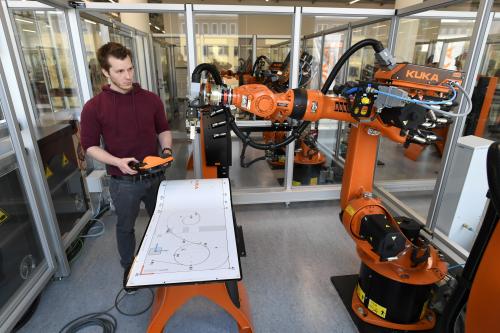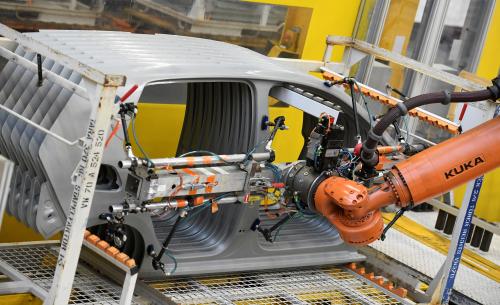Advances in automation and digital technologies are undoubtedly changing the nature of work. Technology creates jobs, often in unpredictable ways, but it also displaces jobs. Some of the routine tasks that make up jobs can now be automated, making some occupations obsolete and displacing workers. Workers affected by technological change can find work in alternative occupations, but research on displaced workers suggests persistent effects: they typically earn less and have worse health, including higher mortality.
While uncertainty remains about whether automation will lead to large employment effects, any effects are likely to impact men and women differently. The labor market remains deeply stratified by gender. For example, 95% of secretaries and administrative assistants were women in 2014-2016, while 97% of construction workers were men. Researchers at the Stanford Center on Poverty and Inequality argue that nearly 25% of women in female-dominated occupations would need to exchange places with men in male-dominated jobs to end all the occupational segregation by gender.
Occupational segregation, therefore, potentially places men and women at different risks of job displacement from automation. Few studies consider job displacement risks by gender, much of the focus has been on the typically male-dominated manufacturing sector. By some estimates, however, women face a higher risk of having their jobs displaced by automation. Other estimates show that men are more vulnerable to potential future automation. Nevertheless, recognition of the gendered structure of the labor market suggests the need for gender-sensitive policies to help workers navigate labor market disruptions caused by automation.
Determining gender divides in automation risk
Researchers employ various methods to determine the automation potential of occupations. Some focus on the automatability of tasks that make up jobs, others estimate the automatability of whole occupations. The differing task content of jobs and occupations, and the risks attached to them may lead to varying conclusions about the risk of displacement by gender. For example, studies by McKinsey Global Institute and the Metropolitan Policy Program at Brookings argue that in the United States, men could face a higher risk of losing their jobs to automation by 2030. Analysis by the Institute for Women’s Policy Research, finds that women were more likely than men to be in occupations with both the lowest and highest risk of technological substitution between 2014-2016.
Women are more likely to gain new jobs in occupations with the lowest risk of automation
Estimates of the differential impact of automation on men and women’s jobs may vary, but researchers broadly agree that women may benefit from job growth in the least automatable fields such as health care and education. Women made up roughly 88% of nurses and home health aides and 79% percent of elementary and middle school teachers in 2014-2016. Such jobs have relatively low risk of automation, and are projected to be among the fastest growing over the next decade. However, relatively higher paying tech jobs in which women have been traditionally underrepresented are expected to grow rapidly too, potentially worsening existing gender gaps in earnings. In the absence of intentional policies, women may continue to lag in these sectors.
Policies to help workers
Government and employers will need to support and expand initiatives aimed at improving worker skills and preparing students for future jobs. But the effects of automation will affect men and women differently, so policies aimed at helping workers need to be gender sensitive. Addressing structural barriers that disproportionately disadvantage women will be crucial in helping them succeed in a dynamic labor market. Specifically, child care and paid family leave policies would help women (and men) integrate paid work with unpaid care work. In addition, increasing pathways for women into the technology and engineering sectors should also be a key policy priority. The benefit of having more women in technical fields would be twofold: it will increase the number of workers with skills that are relevant to employers, and to position women for success in jobs that use new technologies—which are expected to increase significantly.








Commentary
The differing impact of automation on men and women’s work
September 11, 2019